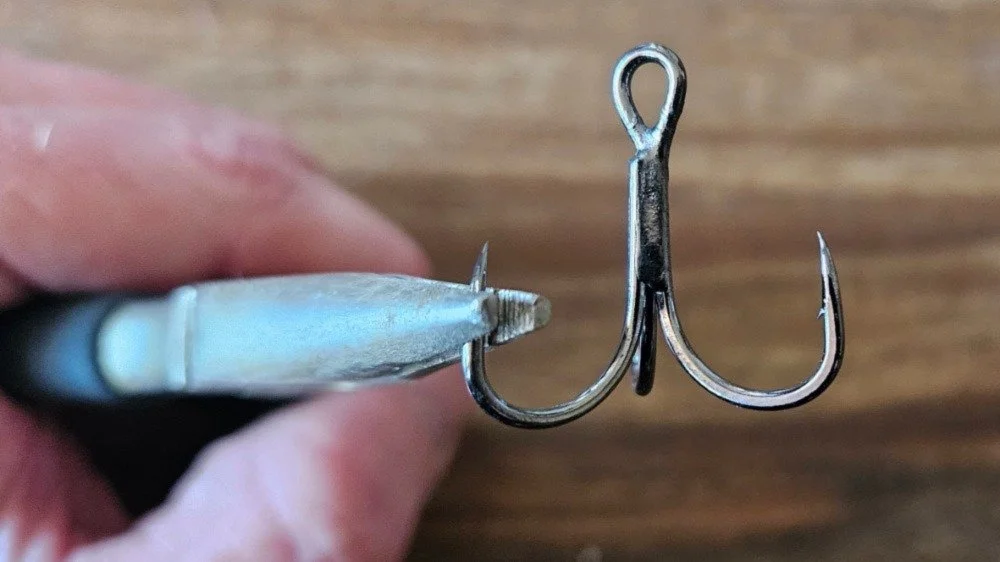Fishy Friday: 3 Tips for Safer Trout Handling
A fly angler chases rising trout on the upper Big Thompson as a bull Elk looks on.
All photos by Evan Jones
Catch-and-release fishing, when done properly, is one of the most sustainable wilderness activities you can engage in. Not only does it return your quarry to the wild unharmed, but fishing can also be enjoyed without drastic modifications to the landscape (unlike, say, skiing at a resort). Unfortunately, however, many anglers assume that simply tossing a trout back into the water is enough to ensure their survival after being caught, but that’s not the case. These are very sensitive fish, and just because they “swam away fine” doesn’t mean they survived. So here are 3 tips to help improve your catch-and-release technique, which will result in more trout for everyone to enjoy:
1) De-Barb your Hooks
Most hooks have barbs, designed to hold them in place during the fight, after a fish eats your lure or fly. They work great on warmwater species such as bass or catfish, which tend to have large, rough mouths, but trout have very delicate, fleshy mouths that are easily damaged by barbed hooks. Fortunately, it’s quick and easy to remove barbs from any hook: take a pair of pliers or forceps, hold them over the barb, and squeeze the barb down until it’s flush with the rest of the hook. Not only will your hooks be far easier to remove from fish, but they’ll also be easier to remove from clothing, trees, fingers, or anything else you might accidentally snag. De-barbed hooks have saved me several trips to Urgent Care over the years.
Pinching down hook barbs will result in less damage to the fish, and less damage to you, your clothing, and your gear as well.
2) Wet Your Hands
Trout have a protective layer of “slime” on their bodies that helps them to resist fungus, parasites, and other maladies. This layer is easily damaged by contact with the oils in our skin, or with cloth surfaces such as gloves or towels. You might not notice any immediate harm to the fish, but it will become far more susceptible to disease in the following weeks until the slime layer is restored. In order to avoid disturbing their protective coating, always wet your hands before touching a trout, and never handle them while wearing gloves. Also try not to set the fish down on either the ground or the snow, since that can also harm to their outer layer. I like to keep them in the net–still partially submerged–while I remove the hook and prepare them for release.
Lifting the fish gently out of the net, while maintaining contact with the water, is a great way to minimize harm while taking photos.
3) Hold Your Breath
If you’re going to lift the trout for a photo, try holding your breath from the moment the fish leaves the water. It’s a good reminder that they can’t breathe either during this time, so if you’re running out of air during the photo session, they surely are too. And since they just fought a lot harder than you did after being hooked, they’re going to need even more oxygen than you do. As a general rule of thumb, 10 seconds out of the water is about the maximum they can safely endure. If your photo doesn’t show water actively dripping off the fish as it’s raised above the surface, you’re probably taking too long.



